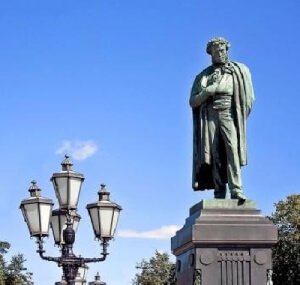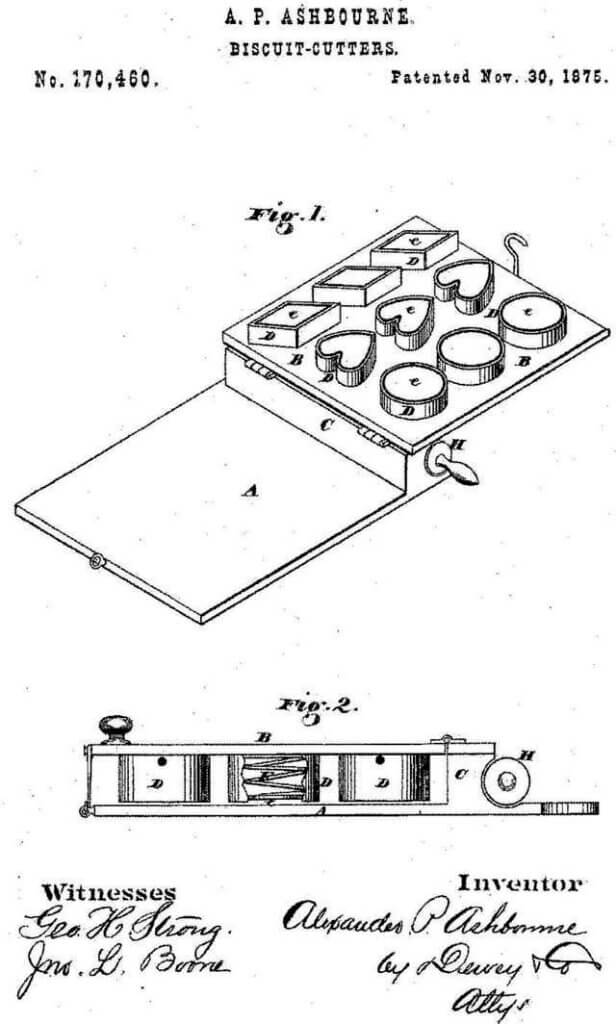Journey Through Recent Stories 🔎
Easter Morning Slave Conspiracy: The Rivermen’s Paradox
Amidst the suffocating grip of slavery, the Easter Morning Slave Conspiracy sparked a flame of defiance in the heart of Virginia. In the shadows of […]
African American History EventsAmidst the suffocating grip of slavery, the Easter Morning Slave Conspiracy sparked a flame of defiance in the heart of Virginia. In the shadows of oppression, Sancho, a humble ferry operator, dared to dream of freedom. With each beat of his heart, the flames of rebellion grew stronger, igniting a fire that would burn through the annals of history. Alongside his comrades, Sancho orchestrated the daring conspiracy of 1802, a bold endeavor to break free from the shackles of tyranny and reclaim their stolen liberty. 💪🏾
The Rivermen’s Paradox: Freedom and Captivity
Enslaved black men, hired out by slave owners, held most, if not all, of the shipping jobs in Virginia and North Carolina. By the mid-1700s, these rivermen dominated the waterways, navigating treacherous currents and bearing the weight of cargo, along with the heavier burden of their enslavement.
Their vessels became symbols of defiance, carrying not just goods, but also the aspirations of a people yearning for freedom. Yet, beneath the surface, they harbored a forbidden knowledge—a literacy in English that defied the laws of their oppressors.
In the swirling waters, the rivermen felt torn between freedom and captivity. 😞 A sense of longing mingled with the spray of the water. For the rivermen, the waterways symbolized a paradox that mirrored their own internal struggle.
Easter Morning Slave Conspiracy: A Daring Bid for Freedom
In the crisp air of fall 1801, within the quiet expanse of Halifax County, Virginia, Sancho and his fellow enslaved souls convened in secret, their hearts pulsating with the desire for liberty. Together, they conspired to defy the shackles of oppression, meticulously planning an insurrection against the white townspeople and plantation owners who held them in bondage. Little did they know that their audacious bid for freedom would go down in history as the Easter Morning Slave Conspiracy of 1802.
Sancho and the rivermen weren’t like most slaves. They could read and write, and they spread news about the rebellion by talking to each other and writing notes. They were also skilled in their jobs and knew how to blend in with white society appearing as freedmen.Sancho said they shouldn’t keep weapons. Instead, they’d grab them when they heard 🎺a trumpet, and they’d use them to destroy anyone who tried to oppress them.
The Call to Arms: Spreading the Message
Alongside his trusted companions, he enlisted a select few leaders to rally more slaves to their cause. As word spread through the canals of southern Virginia, the movement gained momentum, coursing swiftly along the river routes to northeastern North Carolina. From all directions, enslaved individuals heeded 🎺 the call, converging upon the cause. What began as a localized rebellion in Halifax County, Virginia, soon morphed into a widespread uprising, splintering into smaller factions across towns and regions. Sancho found himself at the helm of a movement far beyond his initial intentions as the tide of revolt surged beyond his control.
Revelation and Retribution
As tensions rose, White Patrollers disrupted a slave gathering, seizing handwritten notes in the process. The assembly dissolved quickly, some recruits betraying the conspiracy willingly, while others divulged details under duress. Soon, Virginia and North Carolina authorities uncovered the plot’s widespread reach across waterways.
Amidst escalating panic, enslaved individuals were rounded up en masse, facing dire consequences. Around 30 slaves faced the gallows, with many more subjected to violent reprisals by white aggressors such as cropping of ears and beatings. Only a few were spared from this brutal fate.
Legacy of Resistance
It’s fascinating to explore the history of slave rebellions and uncover how white society underestimated the Negroes’ ability to organize. Long before Sancho’s Easter Morning Slave Conspiracy of 1802, there were significant uprisings in colonial states. These included the Stono Rebellion in 1739, a revolt of 150 slaves in North Carolina in 1798, and Gabriel’s Slave Revolt in Richmond, VA in 1800. Even in the Caribbean, the Haitian Revolution (1791-1804) was in full swing, showing the widespread desire for freedom. Another notable event was the German Coast Uprising in New Orleans in 1811.
Persistence Among Adversity
Despite previous failed attempts to challenge institutional slavery, Sancho and his allies remained undeterred, embodying the adage, “If at first, you don’t succeed, try,🎺 try again.”
As the narrative of the enslaved community’s struggle for dignity unfolded, a profound shift occurred. The once-powerful slave owner, now consumed by fear of retaliation, found himself transformed from hunter to hunted, trapped within a prison of his own making.
Image credit: Engraving of black workers on the Dismal Swamp Canal from Harper’s New Monthly Magazine, XIII (September 1856), 443. (Egerton, Douglas R. “Fly across the River’: The Easter Slave Conspiracy of 1802)”
Alexander Pushkin: The Iconic Afro-Russian Poet
Alexander Pushkin was an Afro-Russian poet, playwright, novelist, and social justice advocate. He was born in Moscow on May 26, 1799. He is one of […]
Global African History PeopleAlexander Pushkin was an Afro-Russian poet, playwright, novelist, and social justice advocate. He was born in Moscow on May 26, 1799. He is one of Russia’s most famous poets.
His Russian father and mother of Afrikan ancestry raised their mixed-race son in a life of nobility. Pushkin was proud of his Afrikan heritage, but his eventual exile from St. Petersburg was more political than race-based.
Pushkin’s maternal great-grandfather is the legendary 18th-century General Ibrahim Petrovich Gannibal (Abraham). Gannibal was an Afrikan prince from Cameroon, Africa. Throughout Europe, he gained recognition as a prominent black intellectual.
Gannibal was a skilled engineer and military General to ‘Tsar Peter the Great.’ Pushkin, proud of this family connection to General Gannibal, honors his great-grandfather’s memory in the novel “The Negro of Peter the Great.”
Pushkin’s Adult Life
In 1817, Alexander finished his studies near Saint Petersburg, Russia Selo Lyceum, a school of Liberal Arts. His studies trained him for growth as a future state leader. But Pushkin had other plans for his future.
At his graduation ceremony, Alexander Pushkin recited one of his political poems ‘Ode to Liberty.’ In the verses, he calls upon the people to rise and take a stand against oppressive laws.
He throws shade at the monarch by telling them that eternal law remains higher than they. ‘Ode to Liberty’ called for permanent destruction and death of the throne. The Soviet Crown did not find “Ode to Liberty” entertaining.

Separately from poetry, A.P. had more ideas kindling inside him. Interested in ‘pure atheism’ and membership in secret societies, the ‘social reformer’ gained the monarch’s attention.
Alexander Pushkin was a member of the Decembrists–a Russian revolutionary movement of high-born Russians. The group advocated for all Russian laws to be written in Russian and not in French. At its core, the Decembrists worked to defend low-born families against Tsarists’ rule.
In May 1820, Pushkin’s involvement with the organization led to his exile from Saint Petersburg, Russia. The ruling monarch sent him to Yekaterinoslav (modern-day Dnipropetrovsk, Ukraine).
While exiled, Pushkin lived and traveled within the borders of Northern Caucasus and Crimea. After six years of living outside of St. Petersburg, his petition to return home was granted. The monarch closely monitored his actions and whereabouts. Publication of much of his work stopped.
Duel to the Death
In February 1831, he married Nathalie Goncharova. They produced three children. Nathalie was young, attractive, and flirtatious. Nathalie was cheating on Pushkin with her brother-in-law. It was her foolish behavior that led to Pushkin’s death.
Pushkin, determined to defend his ego, challenged his wife’s brother-in-law to a shooting duel. Pushkin, who had previously fought in twenty-nine duels, was not so lucky in this fight. The brother-in-law fired the first shot.
Pushkin sustained a fatal wound to his lower body that caused life-threatening abdominal injuries. A few days later, on January 29, 1837, Alexander Sergeyevich Pushkin died at thirty-seven.🌹
Sources:
http://www.afropedea.org/afro-russian-black-russian
https://www.findoutaboutrussia.co.uk/who-was-alexander-pushkin.html
https://www.bl.uk/onlinegallery/features/blackeuro/pushkinnegro.html
http://www.saint-petersburg.com/famous-people/alexander-pushkin/
Alexander Ashbourne: Pioneering the Biscuit Cutter Era
In the annals of culinary history, one name stands out: Alexander Ashbourne. His innovation, the biscuit cutter, not only transformed kitchens but also left a […]
Tech & InnovationIn the annals of culinary history, one name stands out: Alexander Ashbourne. His innovation, the biscuit cutter, not only transformed kitchens but also left a lasting impact on the cooking world.
The Birth of a Revolution
Born in 1820 and departing from this world in 1915, Alexander Ashbourne’s journey was one of ingenuity and determination. In 1875, his groundbreaking invention, patent no. 170,460, announced a new era in biscuit-making. This humble tool would soon grace kitchens and restaurants worldwide, making the once hard process of biscuit shaping easier.
Unveiling the Unsung Hero
Despite biscuits being a household staple and a fixture in restaurant menus, few were aware of the mastermind behind the uniformity and efficiency of biscuit production. Alexander Ashbourne, an African American innovator, defied odds and redefined culinary norms.
From Catering to Innovation
Ashbourne’s path to innovation was paved with hands-on experience. Catering to the elite of Philadelphia, he honed his craft and witnessed firsthand the inefficiencies plaguing biscuit production. It was at the 1863 Emancipation Celebration that Ashbourne’s epiphany struck: there had to be a better way.
The Birth of the Biscuit Cutter Device
Driven by a relentless pursuit of perfection, Ashbourne spent a decade crafting his masterpiece. The result was a marvel of engineering: a spring-loaded biscuit cutter, promising uniformity in shape, size, and efficiency in production. Featuring a hinged board on a metal plate and an array of cutter shapes, his invention changed how chefs cooked.✊🏾

Beyond Biscuits: A Culinary Visionary
Alexander Ashbourne’s journey of innovation didn’t stop with biscuit cutters. In fact, his impact reached even further, shaping the way we use coconut oil today.
Breaking Technological Boundaries
Back in the late 1800s, technological limitations were no match for Ashbourne’s determination. From 1875 to 1880, he dedicated himself to perfecting the refining process of coconut oil, despite the challenges of the time.💪🏾
A Leap Forward in Innovation
In 1880, he leveled up again, snagging another patent. This time, he worked his magic on coconut oil, making it super versatile for everyday use!. Through meticulous steps including filtration, bleaching, high-temperature heating, and hydrogenation, Ashbourne transformed coconut oil, removing unsaturated fatty acids and making it suitable for widespread domestic use.
From Kitchen to Cosmetics
Ashbourne’s revolutionary approach changed the coconut oil industry and opened up new possibilities for its applications. Coconut oil, once limited in use, became a versatile ingredient, finding its way into a wide variety of products, including haircare items, foods, and fragrances.
Mass Production and Domestic Consumption
Thanks to Ashbourne’s advancements, coconut oil became more accessible for mass production and everyday use. This not only increased its commercial value but also made it a staple ingredient in countless households around the world.
Ashbourne’s legacy is not just in the kitchens of yesteryears, but also in the everyday products we use today, a testament to his ingenuity, determination, and the power of innovation.
Legacy and Beyond
As the late 1880s approached, Ashbourne, now recognized as the pioneer of biscuit cutting, embarked on a new chapter in Oakland, California. There, he transitioned from inventor to entrepreneur, owning and operating a modest grocery store. His legacy lives on, not only in the kitchens of yesteryears 🎯 but also in the coconut-scented products and uniform biscuits of today.
At the age of 95, Alexander Ashbourne, a man born into slavery, reached the conclusion of his journey, but his impact resonates through generations, serving as a testament to the power of innovation and perseverance. 🙂(Bone Appetit 🍽)









